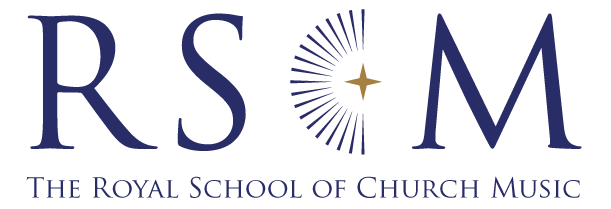Reviews of CDs
* Worth hearing
** Recommended
*** Essential listening
ORGAN CDs
**
THE FOREST AT DAWN: ORGAN WORKS BY ANDREW DOWNES
Robin Walker plays the organ of Ely Cathedral / Regent REGCD559
This is an intriguing retrospective of music by Andrew Downes. The opening Prelude: The Forest at Dawn allows organist Robin Walker to demonstrate a wide range of timbres on the Ely Cathedral organ – if a little disjointed, to my mind, with motivic ideas seemingly presented without much of a feeling of line. On the other hand, the Fanfare movement of the Prelude, Fanfare and Postlude is particularly effective: the rhythmic clarity of cascading semiquavers and punchy, syncopated rhythms is impressive. The longest, most substantial piece on the programme is the Sonata for Organ, a study of contrasts in mood, timbre and texture. This is certainly an interesting and worthwhile recital of music celebrating a little-known composer, which is performed with enthusiasm and respect by an excellent organist. It is not a CD of organ fireworks but should be sought out by enthusiasts of unjustly neglected, contemporary organ music!
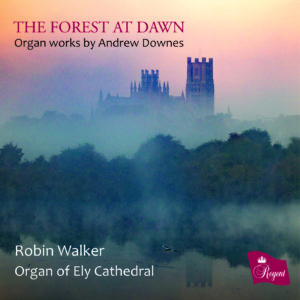
***
A WORLDWIDE ORGAN TOUR
A collection of archive recordings / John Scott Whiteley (organ) / Priory PRCD1236
A powerfully exuberant ‘Transports de joie’ from Messiaen’s L’Ascension, recorded in 1989 at Denmark’s Haderslev Cathedral, opens this recording celebrating 30 years of John Scott Whiteley’s relationship with Priory Records. The CD has a selection of French, Belgian and British organ music recorded on organs in Denmark, Germany, the USA and the UK. Three of the pieces were composed for John Scott Whiteley – Humphrey Clucas’s Fantasy on Urbs beata, Robin Walker’s Meditation: Deep in the woods (both recorded in York Minster) and James MacMillan’s Toccata (recorded in Leeds Town Hall). The Hull City Hall organ is put through its paces in Dubois’s Marche des Rois Mages, with the restored Compton Xylophone getting a chance to shine. There’s enough of each organ for listeners to get a feel of the character, colour and timbre of each. Whiteley’s virtuosity as well as skill as a composer is never in doubt. The dynamic range and colour he achieves from each instrument is simply stunning.
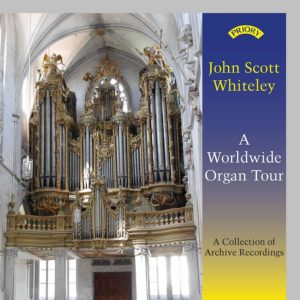
**
J.S. BACH: THE ART OF FUGUE BWV 1080, CANONIC VARIATIONS ON VOM HIMMEL HOCH BWV 769
Bach Organ Works Vol. X / Margaret Phillips plays the 2012 Richards, Fowkes and Co. organ in St George, Hanover Square, London / Regent Records REGCD558
The culmination of this series of recordings of the complete organ works of J.S. Bach arrives with The Art of Fugue. This was Margaret Phillips’s lockdown project and was recorded (between various lockdowns) in St George, Hanover Square, London on the magnificent Richards, Fowkes and Co. organ of 2012. The accompanying notes, written by Phillips, make clear the considerable amount of research and preparation she has undertaken to make this recording. Her account is well measured, and the texture is clear throughout: every note can be heard, the ornamentation is subtle (particularly in the Contrapunctus 6) and there’s a nice sense of space. The only problem I have, and this is more a matter of taste, is that it can sound a rather academic reading, with tempi in some movements a bit on the slow side. However, the Canonic Variations on Vom Himmel hoch, da komm ich her bounce along nicely. Kevin Korsyn’s completion of Contrapunctus 14, which ends the disc, is a fine composition – but some things are best left unfinished!
Ian Munro
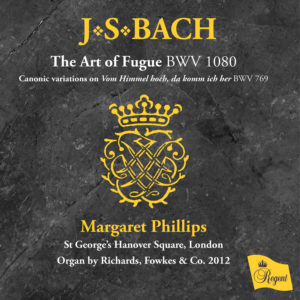
CHORAL CDs
***
A NEW SONG
Choir of St Margaret, Westminster / Thomas Trotter (organ) / Aidan Oliver / Priory PRCD1239
This recording sees English Renaissance composers Tomkins, Byrd, Philips, Gibbons and Weelkes performed alongside contemporary composers including Julian Anderson, Bob Chilcott, Roxanna Panufnik and Sir James MacMillan. Due to a scaling back of regular services and choral activity at St Margaret’s, this disc is one of the last recordings the choir made. With that in mind, it is perhaps disappointing this CD was not recorded there but at St John the Evangelist in Islington. However, a good organ expertly played by Thomas Trotter and an excellent acoustic make up for any location misgivings. Aidan Oliver is one of the UK’s leading choral directors, and therefore the crisp, clear diction and impeccable vocal blend are as anticipated. Peter Philips’s O crux splendidior is beautifully paced, with effective dynamics and clear vocal lines. Gareth Treseder and Alastair Putt are two members of the choir whose works are featured on this CD – both Treseder’s Tomorrow shall be my dancing day and Putt’s O magnum mysterium are skilful and effective compositions, worthy of their place in such distinguished company.
Ian Munro
***
IF
Libera / Robert Prizeman / Invisible Hands Music IHCD90
This is the latest recording to be made by Libera and was released in October last year, just one month after the untimely death of Robert Prizeman, its founder and director. CMQ December 2021 carried an obituary, and I myself wrote about Libera in CMQ June 2009. Robert’s musical roots were bound up with a church in south London where he was an organist during his teens. He also became involved with the running of residential RSCM courses directed by Martin How. It was from the mid-80s that Robert’s career and that of Libera took off.
As always with Libera’s recordings, high-quality production and musical values are evident; this CD comes with superb atmospheric photography of the boys clad in their familiar monastic white robes, as well as pictures from behind the scenes. The music is atmospheric and also reflective in mood, the one exception being the upbeat Song for our world. Most other tracks are devotional, though the title track, if, sets a text from the Diary of Anne Frank. There are a number of arrangements of familiar classical works, such as Schubert’s Ave Maria, Geoffrey Burgon’s Nunc Dimittis and John Rutter’s Gaelic Blessing.
One track in particular stands out, one that to my mind best reflects what Robert Prizeman has created over the years and what Libera has been about. Much of its spirituality is founded in traditional catholic (with a small ‘c’) roots. Vespera begins with the plainchant for ‘Te lucis ante terminum’ sung in octaves; clearly, membership of Libera doesn’t necessarily stop abruptly once a boy’s voice has changed! It continues with a gentle setting by Prizeman of ‘Before the ending of the day’. Then there’s the musical backing – the use of traditional orchestral instruments fused with synthesizers, and careful production and mixing of the boys’ voices themselves. Some might argue that all this is artifice, but there is no doubt that there is an art to creating (and with what creativity!) a phenomenon that has caught the hearts of many people all over the world.
The CD closes with Lux Aeterna – Robert Prizeman’s final work. But his legacy, in the form of Libera, continues. Their December concert in London was directed by Sam Coates; the hope is, pandemic restrictions permitting, that international touring can begin as soon as possible.
Stuart Robinson
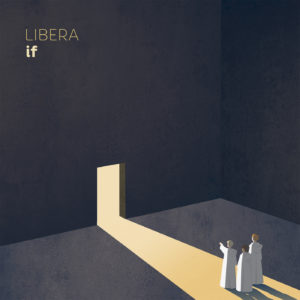
BOOKS
THE CHORISTER’S POCKET PRAYER BOOK
Andrew Dow and Gordon Giles
RSCM 124pp. PB 978-0-85402-329-5 £9.95
This excellent little book is by no means only for choristers. At its core are over 70 pages of seasonal prayers, one for every Sunday and major holy days from Advent Sunday to Christ the King, followed by ones for weddings, baptisms and funerals, intended primarily for use in the vestry before or after a service. Those sections are bookended by general vestry prayers and ‘musical’ collects. It is good to be able to use these prayers that relate to each specific occasion, and all in dignified but modern English. The Chorister’s Prayer opens a ‘Traditional Prayers’ section, starting with the archaic ‘Bless, O Lord, us thy servants who minister in thy temple’ instead of ‘Bless us, O Lord, who lead your praise’ as at the end of the RSCM’s ‘Admission to the Choir’ leaflet. Perhaps that can be given as an option at a future reprint: there is space for both on the page.
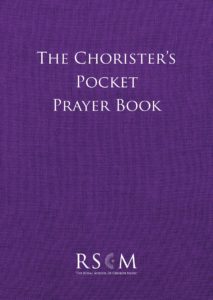
AN ORGANIST REMEMBERS
Roy Massey
RSCM 178pp. PB 978-0-85402-330-1 £18.95
Roy Massey, one of the most significant choir trainers and organists of his generation, takes us from the start of his music making as a treble and subsequently organist at churches in Birmingham, to his 27 years at Hereford Cathedral, including many times directing the Three Choirs Festival. In between he was simultaneously Warden of the RSCM at Addington Palace and organist at St John the Baptist, Croydon (then Croydon parish church, now Croydon Minster), and then organist at Birmingham Cathedral.
At Addington Palace he was heavily involved with RSCM courses there and overseas in North America and in Australia and New Zealand. His memories of people and places and his obvious warm affection for those courses are notable. After Hereford Cathedral, St Michael’s College in Tenbury receives a chapter, before one accurately titled ‘Organs and recitals’ and one misleadingly titled ‘Retirement’ – misleading as it is full of activity and anecdotes. This book, with around 140 photographs that punctuate the text, has been designed and edited by Paul Hale and is a delight to open and read.
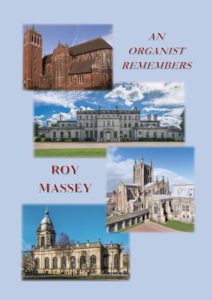
ASSIST OUR SONG: MUSIC MINISTRIES IN THE LOCAL CHURCH
Douglas Galbraith
St Andrew Press 320pp. PB 978-1-8008-3010-3 £19.99
This book distils the wisdom and experience of a church minister who is also a music graduate and composer. He is a Church of Scotland minister, but his discussion of the role of music in worship is relevant and valuable for musicians and clergy across countries and denominations. It is a practical guide, underpinned by an understanding of worship set out succinctly in opening chapters on worship and music. There is much for church musicians on organs, hymn accompaniment, ‘playing the words’, and worship songs – leading and accompanying them. Clergy are addressed and recommended among other things to ‘browse through the hymn book’, ‘learn to read music’ and ‘preach about worship’.
Browsing through the hymn book and learning to read music are also urged on the congregation, as is, at a more down to earth level, the reminder for clergy and congregation not to speak to an organist while playing a voluntary. The music ministry of members of the congregation is emphasized, building on Wesley Milgate; they should sing well, listen to each other, and learn new songs. In fact they are described as ‘apprentice angels’ in a book that opens with an epigraph comprising the first verse of ‘Ye holy angels bright’. There are few worshippers – clergy, music leaders, instrumentalists, choir, congregation – who would not enjoy as well as benefit from reading this enlightening book.
Julian Elloway
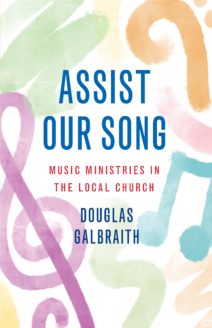
Reviews of printed music
CHORAL MUSIC
E Easy
M Medium
D Difficult
HOLY WEEK
UBI CARITAS [E]
Philip Moore
1.SS; 2.ATB
Encore Publications £1.95
Here are two totally different settings, published within a single four-page leaflet. The two-part setting is as simple as could be, with one voice echoing the other at the unison, until the final cadence. It sets only the words of the antiphon, while the ATB setting has the complete text, passed from voice to voice while the other singers repeat ‘Ubi caritas et amor, Deus ibi est’. Depending on the forces available, either would be highly recommended for use within the Maundy Thursday liturgy.
CRUCIFIXUS [M]
Olivia Sparkhall
SATB soli, SATB choir
Encore Publications £2.95
This striking setting stands in a long line of such settings over the centuries, but holds its own and has a special approach to the words. There is a repeated ‘Crucifixus’, with distinctive rhythmic and harmonic pattern – the composer refers to the congregational shouts of ‘crucify him’ in liturgical readings of the Passion as a catalyst. At first the choir has the ‘Crucifixus’ pattern while solo voices continue with the text; then roles are reversed as choir tenors and basses describe suffering and burial. The music moves through tonalities and textures until a final long crescendo and powerful conclusion on the repeated, single-word ‘Crucifixus’.
James L. Montgomery
EASTERTIDE
PRAISE TO THE KING, THE LORD OF ALL WE SEE [E]
arr. Antony Baldwin; words by Alan Playfair Calder-McNicoll
SATB and organ
Banks Music Publications ECS612 £1.95
I have recently reviewed Antony Baldwin’s stirring arrangement of Michael Korb and Uli Roever’s Highland Cathedral for organ (see Sunday by Sunday 93). With the blessing of Antony Baldwin, Alan Playfair Calder-McNicoll has set his own text to this organ arrangement. There are already plenty of other hymns and anthems using this melody, but those wanting an Easter anthem with this powerful tune need look no further. Calder-McNicoll’s text is certainly poignant. The vocal lines duplicate the organ part, which may be a comforting support to choirs who rely on this; for more experienced choirs looking for something a bit more challenging, there are probably more satisfying choral arrangements out there.
Ian Munro
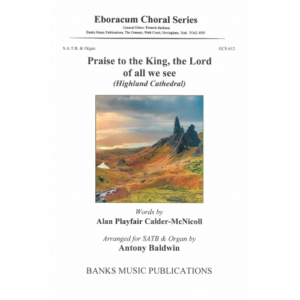
MOST GLORIOUS LORD OF LIFE [D]
Francis Jackson
SATB and organ
Church Music Society CMS OS49 £3.15
Francis Jackson (1917–2022), whose obituary appears in the current edition of CMQ, had his first anthem published over 70 years ago. This latest publication is an Easter anthem, written for the 2009 Edington Music Festival but not published until now, and only after the composer had the opportunity to make some unspecified revisions. The setting is tautly constructed, with a quaver pattern, heard in the first bar on the organ, reappearing in various guises throughout the varied textures. Choir parts are largely independent of the organ and, although always very singable, will need good, confident singers. The texture is mostly freely contrapuntal, making the times the voices come together all the more striking.
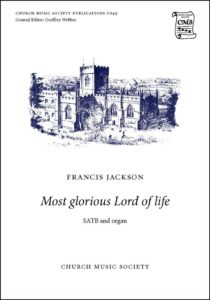
DUM TRANSISSET SABBATUM (I) [M]
John Taverner ed. Sally Dunkley
SATBarB
Church Music Society CMS RS144 £2.55
The Eastertide matins respond, with words from Mark 16.1–2 starting ‘When the Sabbath was over’, was set at least twice by John Taverner (d.1545) in five parts, and users of the Hugh Benham edition in EECM 30 will be aware of the source complications with two sets of partbooks (one incomplete) dating from long after the composer died, plus a four-part arrangement, probably by Taverner himself. Sally Dunkley has produced a clear edition, with critical commentary, that is designed for practical performance. She supplies the plainsong that is needed for a complete performance but also suggests how it may be omitted. Two versions of the opening are offered, one derived from the four-part arrangement.
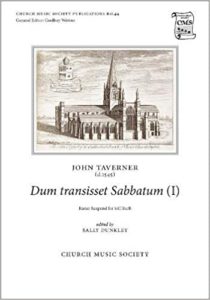
MARY IN THE GARDEN [E]
Caroline Leighton
2-part voices and piano
Encore Publications £1.95
This is an old-fashioned but sweet little setting of words by the composer. The poem itself seems rather contrived as it tries to fit the rhymes, but the words cover some of the big themes of the Easter story. Junior choirs will enjoy the easy-to-learn melody. The two vocal lines take it in turns at first, describing or representing Mary and Jesus; then comes the standard shift up a semitone and a final message, ‘Peace be with you and for ever no sin.’
Stephen Patterson
TRINITY SUNDAY
HONOR, VIRTUS ET POTESTAS [M]
Thomas Tallis ed. Sally Dunkley
SAATB
Church Music Society RS150 £2.55
In this hymn of praise to the Holy Trinity, the tenor part has the stately plainchant melody around which the other four voices weave a glorious web of polyphony. The editor provides Sarum plainchant for performance as originally intended as a liturgical respond, but also shows how it may be performed as a motet for Trinity Sunday.
James L. Montgomery
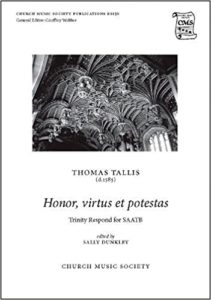
ANTHOLOGY
JAZZ MISSA BREVIS [M]
Don Gillthorpe
SATB with divisions and solos
Sing for Pleasure ASB16 978-1-902923-37-6 £8.00
You have to read the small print below the title to discover that not only is there a Latin Mass setting but also six ‘jazz-inspired’ motets by different composers, some of them well known in the church music world. I particularly liked Oliver Tarney’s haunting setting of O sacrum convivium with its gentle rhythmic propulsion under the angular melody. Mark Jordan’s Ave verum corpus is a highly attractive, bluesy setting. Also excellent is Nick Graham’s treatment of O salutaris Hostia, sounding as if an African American spiritual. Katy Lavinia Cooper sets the Thomas Aquinas text of Pange lingua, with extended Alleluias at the beginning and end that will preclude its use on Maundy Thursday, although suitable for Corpus Christi. Baz Chapman has two Marian contributions, an Ave Maria and a setting of Regina caeli that goes with a real swing.
Don Gillthorpe works his way through a number of classic jazz styles in his four-movement Mass setting. Although a cappella as printed, chord symbols are provided for use with a rhythm section if wanted (the same applies to the majority of the motets). Church choirs, especially those not used to singing in these idioms, may like to approach one or two of the motets first before deciding whether to tackle the Jazz Missa Brevis itself. All in all, it is a valuable anthology.
Julian Elloway
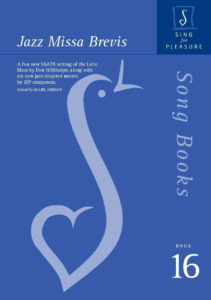
ORGAN MUSIC
E Easy
M Medium
D Difficult
MANUALS ONLY
TEN VOLUNTARIES FOR ORGAN OR HARPSICHORD OP. 5 [M]
John Stanley ed. Eberhard Hofmann
Carus Verlag 18.007 €39.95
The three sets of Voluntaries by the blind composer John Stanley (1712–86) were published originally between 1748 and 1754, and reprinted several times in the same century. They should need no introduction to readers, semi-facsimile and modern editions being readily available.
For this new modern edition of the first set, Hoffmann has consulted the 1748 edition and also a reprint of 1784 and supplied a critical commentary at the back of the volume – but in German only. Original beaming and fingering have been modernized. A short introduction in English and German gives biographical details and some brief comments on the 18th-century voluntary, but there is no detailed information on its development, nor notes on the individual voluntaries. Their performance on the contemporary organ, including ornamentation and registration, is only discussed in general terms. This new edition is clearly printed with six systems to the page, but is somewhat expensive in comparison to other modern editions of the same music.
John Collins
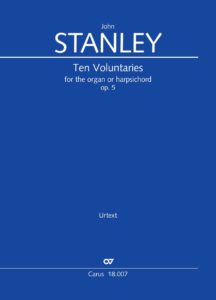
EASTER VOLUNTARY
EASTER ALLELUIAS: FANTASIA ON VICTIMAE PASCHALI LAUDES [M]
Christopher Maxim
Paraclete Press (RSCM) PPM02063M £8.50
At the centre of this piece is a complete setting of the Easter Sequence (‘Christians, to the Paschal Victim’) with Latin and English words overlaid to assist in interpreting and shaping the musical line. Either side of that, the music dances through fanfare-like passages in which fragments of the plainchant melody are tossed about. It is exciting and full of Easter joy – and not too difficult!
Duncan Watkins
HYMN ACCOMPANIMENTS
THE FAGUS BOOK OF TURBO-CHARGED HYMN TUNES [mostly M]
Fagus-music.com £20.00
This is more than another collection of last verse arrangements. Each of the 40 tunes is given a short playover, often more imaginative than just the first (or last) line. An organ link from the penultimate verse leads into a final verse with ‘turbo-charged’ harmonies. Most of the hymns then have a short coda. Each of those four elements may be used separately. For example, players using the Carols for Choirs setting of Adeste fideles and who prefer to retain Willcocks’s organ final verse may enjoy the link before and coda after the last verse that reuses the ‘Sing, choirs of angels’ descant.
Mostly the arrangements appear designed to be played loudly, although Eventide’s final verse is marked piano (notwithstanding ‘heaven’s morning breaks’). Almost all the tunes are widely used, with the exception of Kirn that I think is unique to Scotland. Harington is not so well known, but its inclusion may encourage the discovery of this graceful, common-metre tune. Geoffrey Atkinson contributes the majority: 24 skilfully written arrangements that seem to flow naturally and would enhance the singing rather than distract from it. Kyle McCallum’s 11 contributions tend to draw attention to themselves and seem best with sturdy tunes such as Lord of the years or To God be the glory. In several of his arrangements (above all in Melita), the lowest note of the left hand doubles the pedal line for much of the tune. There are three arrangements by Paul Davis with a tendency to be bombastic and two by Gary Higginson that are certainly clever (Quem pastores with the entire tune in the bass line). It is a wide-ranging anthology, within which organists will find much to enjoy and to apply, with discretion, to their hymn playing.
Julian Elloway
ANTHOLOGIES
ORGAN MUSIC FOR JOYFUL MOMENTS [M]
Tim Knight Music TKM855 £14.95
‘Six short pieces for joyous occasions by composers from around the world’ is the subtitle, but ‘the world’ comprises just the UK (four pieces) and the USA (two pieces). They are a mixed bunch, but four at least are worth learning for performance at a joyous occasion. Richard Dunster-Sigtermans contributes an exuberant Paean that is obsessively unrelenting in its 7/8 quaver pattern, with variety provided by just a step up in dynamic from forte to fortissimo. It is enjoyable to play. The spelling of Alastair Johnston’s Féte may be unintentional, as may its tempo indication ‘Energetially’, and possibly the inclusion of the words ‘REALLY FINAL’ at the top of the page, but the music is bright and rhythmically adroit – of all six pieces, it is the one that most successfully evokes a ‘joyful moment’. Leigh Harrison is perhaps the most accomplished composer here – his Fanfare, a little more difficult to play, is well written and full of variety. Festivities! by Phil Lehenbauer features a dancing tuba tune that seems to allude to ‘Tomorrow shall be my dancing day’ – it made me smile.
ORGAN ENCORES VOLUME 6 [M–D]
arr. Ian Tracey
Church Organ World COW-2021-010 £20.00
This is billed as the last of this series of ‘Organ Encores’ anthologies. The pattern remains the same, with a mixture of early (Susato, Handel, Clarke and Rameau) and 19th-century (Tchaikovsky, Gounod and Meyerbeer) pieces, none originally written for organ, transcribed by Ian Tracey. The big work is the ‘Coronation March’ from Meyerbeer’s gruesome opera Le Prophète – not easy to play, although easier by far than the W.T. Best transcription. Most of the rest is lighter fare, such as the ‘Dance of the Cygnets’ from Swan Lake, Gounod’s Funeral March of a Marionette and the Minuet from the Overture to Handel’s Berenice. Tracey’s over-the-top arrangement of Susato’s ‘Shepherds’ Dance’ from La Danserye is in the tradition of Warlock’s treatment of Orchésographie dances – and great fun!
Duncan Watkins
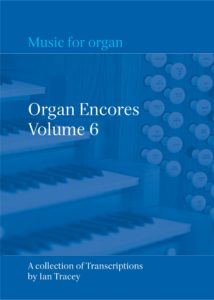
VOLUNTARIES
SUITE FOR JASPER [D]
Malcolm Riley
Banks Music Publications 14114 £7.95
The five movements of this characterful suite would each form an attractive voluntary. Riley is an authority on Percy Whitlock. Although only the opening Fanfare is marked ‘with apologies to PW’ (it starts with a reference to Whitlock’s Fanfare from his Four Extemporization), I thought I spotted more glances towards ‘PW’ in the subsequent Jig followed by an atmospheric Berceuse, Scherzetto and finally a vigorous Toccata. A child’s train set on the font cover is misleading: the Suite was triggered by the birth of Jasper, but the music is adult (and not easy to play) – written, as the composer says, ‘in the hope that one day he might be able to play it!’
Duncan Watkins
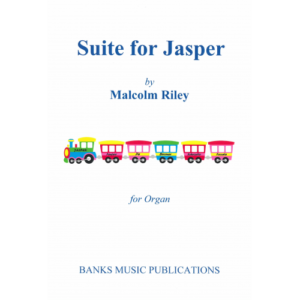
TWO SKY HYMNS AND AN OASIS REMEMBERED [E/M]
Carson Cooman
Zimbel Press (Subito Music) 80101437 $11.95
FOR RICHARD DIEBENKORN [M]
Carson Cooman
Zimbel Press (Subito Music) 80101494 $10.95
The Harvard-based organist Carson Cooman is well known for his tireless support of living composers, both through his weekly recital series and through his ever-expanding YouTube channel that contains hundreds of recordings of a wide variety of works. Beside this selfless promotion of the music of others, it is easy to lose sight of how he is also an excellent composer in his own right, amply demonstrated by these two recent volumes.
Night Sky Hymn and Day Sky Hymn are two spacious works linked by sustained chords and opulent harmonies; An Oasis Remembered (a memorial piece for the Australian composer Robert Allworth who died in 2017) is similarly expansive and radiant. For Richard Diebenkorn is a tribute in music to the American painter (1922–93). It is more complex and sectional, with some passages of directed improvising, yet still easily accessible, spacious and sustained, offering ample scope for exploring the colours of the instrument. This is generous music by a generous musician, well worth exploring.
Huw Morgan
CONTRASTS: 3 SHORT PIECES [M]
Ian Higginson
Tim Knight Music TKM857 £8.95
I warmed to these pieces as I progressed through them. The opening Trumpet Tune has a sparkle to it, although I confess that when the trumpet melody was repeated one last time on full organ (including pedal reed) I did feel that it was one repeat too many. The Intermezzo has poise and nice harmonic touches. For me, the final triple-time Sortie is the most successful – as a recessional voluntary it would send the congregation out with a swing.
IN MEMORIAM [E/M]
IMPROVISATION ON ‘CRIMOND’ [E/M]
SORTIE HÉROIQUE [M]
Vernon Hoyle
Banks Music Publications
14111 £3.50, 14112 £2.99, 14113 £3.95
In Memoriam has the character of a lament; Improvisation on ‘Crimond’ gently explores different aspects of the melody around a central, more powerful statement of the complete tune; Sortie Héroique is what its title says, with a grand, triumphant finish. Although I sometimes wish that the composer had a more distinctive musical voice, one cannot but admire the musical craftsmanship and invariably idiomatic and effective organ writing.
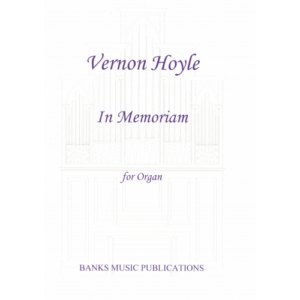
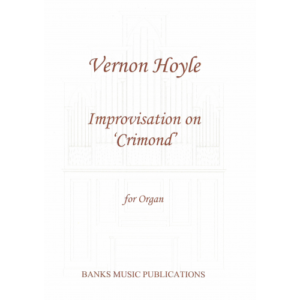
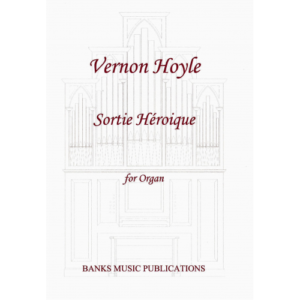
SUITE FOR ORGAN [D]
Christopher Maxim
Paraclete Press (RSCM) PPM02035M £24.00
The five movements of this Suite are dedicated to different organists, and although the whole forms an effective and substantial concert piece, it is probably as five individual voluntaries that most readers will play it. At the centre is a sprightly Fugue marked ‘scherzando’ and that might have been also marked ‘à la Gigue’. Surrounding that are slow movements: an ‘Aria’ before and a ‘Scena’ after that is like an operatic recitative building to a dramatic climax. The opening ‘Intrada’, with touches of Mathias, builds to an exciting climax that would form a brilliant conclusion to a festival service. The final movement of the Suite is a ‘Toccata-Sortie’ that increases in energy over its considerable extent in an audience-pleasing demonstration of virtuosity.
Duncan Watkins
FESTIVAL TOCCATA [D]
James Mitchell
RSCM RO40 £7.95
This exciting addition to the RSCM’s publications was the winning entry in the RCO Composition Competition in 2020 in the ‘Under 25 years’ category. It was written with a large church organ in mind, which may be a slight hindrance for performances on a smaller instrument. Nonetheless, Mitchell’s skill as a composer is clear from the outset. The opening stately fanfare figures give way to a toccata with cascading semiquavers. The use of hemiola rhythms is common throughout the piece and players will have to be prepared for some rhythmical complexities. This is an impressive piece of writing and is ideally suited for a recital programme or festival service.
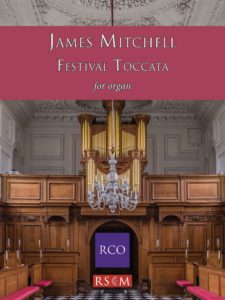
SCOTTISH RHAPSODY OP.64 [M/D]
Hans Uwe Hielscher
Butz-Verlag BU3015 €14.00
This substantial rhapsody contains six famous Scottish traditional tunes (Scotland the brave, Annie Laurie, The Flowers of Edinburgh, Loch Lomond, Auld Lang Syne and The Hundred Pipers) that appear in various guises throughout the work. Grace notes, Scotch snap rhythms and drone effects, all common features of Scottish traditional music, are used throughout, but not overly relied on. Composed with a standard three-manual organ in mind, it is possible to play it on two. Registrations are clearly indicated, but some are given in German: some knowledge of the language or access to a phrasebook is helpful. Key signature changes could be more clearly marked. The notation looks a little untidy in a few instances where bars are continued (without warning or particular need) on the following system or page – especially when there’s a key change or the last note forms an upbeat into a new melody.
Ian Munro
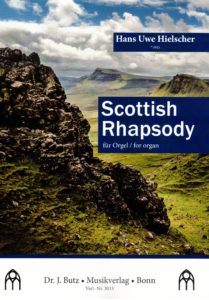
A HUGH BLAIR ALBUM [M]
Hugh Blair ed. David Patrick
FOUR ORGAN SOLOS [M/D]
Harry Farjeon ed. David Patrick
Fitzjohn Music Publications £8.50 each
David Patrick continues his valuable anthologizing of little-known organ music from the early part of the 20th century. Hugh Blair (1864–1932) is known to Anglican church musicians from the ‘Blair in B minor’ evensong canticles. The name of Harry Farjeon (1878–1948) survives today, if at all, from a 1937 recording by Eileen Joyce of his Tarantella in A (you can find it on YouTube – it is astonishing). He was the older brother of Eleanor Farjeon, author of ‘Morning has broken’, and was the youngest professor at the Royal Academy of Music when he was appointed to teach composition in 1903.
The Farjeon volume opens strongly with Élégie Héroïque, at times sombre, at times impassioned, underpinned by gloomy pedal scales. It is in E flat minor; David Patrick kindly also provides a transposed version in E minor, but it is worth mastering all the flats in the original. The other three pieces are lighter, including a Sérénade peu sérieuse that has an affecting tinge of melancholy. Farjeon was an accomplished composer and rather shows up (to my taste) Hugh Blair, whose three pieces, including a Bridal Procession, can seem overblown for their musical material. The Toccatina is a case in point: is the grand Waltonesque coda, after much scurrying about, appropriate or not? Perhaps readers should buy this inexpensive volume to decide themselves – and have repertoire to hand to conclude a service that has included ‘Blair in B minor’.
MARCH IN D OP. 108 [M]
Felix Mendelssohn arr. David Patrick
Fitzjohn Music Publications £7.00
Mendelssohn’s march was commissioned as part of celebrations of a Dresden visit by Peter von Cornelius, the uncle of the composer Peter Cornelius. After being arranged for organ, the music feels similar to Mendelssohn’s Wedding March in its catchy main tune and the musical material of the episodes, but suitable for performance on non-nuptial occasions. As well as playing it as a voluntary, I am going to keep it as a suggestion for wedding entry music, especially when the ‘other’ Mendelssohn march is going to conclude the service.
Julian Elloway
